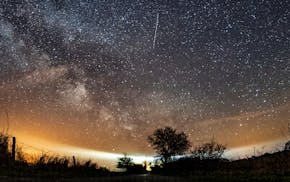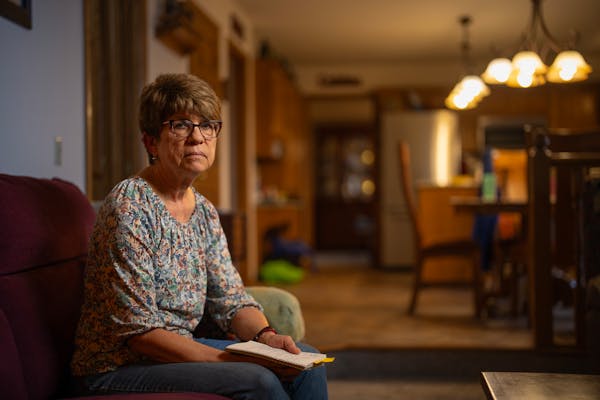DEL NORTE, Colo. — A colossal wildfire raging near popular tourist areas of the southwestern Colorado mountains more than doubled in size over the weekend, driven by winds and fueled by dead trees in drought-stricken forest, authorities said Sunday.
The weather has prevented fire crews from making progress against the blaze, which Sunday night was estimated at 114 square miles.
No structures have been lost in the fire, and no injuries have been reported.
Sunday, officials said most of the intense fire activity occurred on unburned areas inside the perimeter of what are technically three separate lightning-sparked fires.
But with heavy winds expected again Monday, the perimeter is expected to grow again, said Pete Blume, a commander with the Rocky Mountain Type 1 Incident Command Team.
Although crews Sunday were able to focus on efforts to protect towns like South Fork, the Wolf Creek ski area and homes along Highway 149, Blume said it doubtful fire fighters will be able to establish any containment lines until there's a break in the hot, dry, windy weather, possibly Tuesday.
They remained optimistic, however, that they can protect South Fork, whose 400 residents and hundreds of summertime visitors were forced to flee on Friday after two of the fires joined and began a fast advance toward the town. The blaze Sunday was two to three miles away, Blume said.
Blume, a commander with the Rocky Mountain Type 1 Incident Command Team, said the wildfire is the worst ever known to hit the Rio Grande National Forest.
"It's not typical to have these kinds of fires here," said Blume, but beetle kill, the 30 to 40 mile an hour winds and extreme drought are "also not the norm."
Firefighters are hoping for a break in the high winds as well as the anticipated July monsoons to help them fight back the flames. Until then, Blume said, "with that much beetle kill and drought we could have every resource in the country here and still not put in a containment line."
Still, fire officials believe portions of the blaze will likely burn all summer in forested, nonresidential areas, with full extinguishment probably months away.
The lightning-sparked blaze started June 5, but its rapid advance Friday prompted the evacuations.
Residents and tourists were settling in for a long wait before they can return to their homes, cabins and RV parks.
"They just said they had no idea how long it would be before we could be back in South Fork," said Mike Duffy, who owns the South Fork Lodge.
Duffy said he and his wife, Mary, were able to get their personal possessions before fleeing fast-advancing flames that officials initially feared would overtake the town. But with the fire still within three miles of South Fork, they are worried about the long-term impact of a prolong evacuation and news reports about the fire raging around the tourism-dependent town.
Summer visitors include many retirees from Texas and Oklahoma who come to the mountains to flee the heat.
South Fork Mayor Kenneth Brooke estimates that between 1,000 to 1,500 people had to flee, including the summer visitors and permanent residents.
More than 600 firefighters were battling the blaze, and more are coming every day. They also focused on newest arm of the fire as it crept through beetle kill toward the historic mining town of Creede, the last silver boom town in Colorado before the industry went bust in the late 1800s.
Elsewhere in Colorado, about a dozen fires also continued to burn. Firefighters were making progress on a 19-square-mile wildfire near Walsenburg in southern Colorado. The fire was 10 percent contained.
And a wildfire in foothills about 30 miles southwest of Denver was expected to be fully contained Sunday evening. That fire burned 511 acres and forced 100 people to leave their homes.
Police arrest dozens of pro-Palestinian protesters at Columbia, including congresswoman's daughter
New attorney joins prosecution team against Alec Baldwin in fatal 'Rust' shooting

The Lyrid meteor shower peaks this weekend, but it may be hard to see it

Legislation that could force a TikTok ban revived as part of House foreign aid package

